Culture

Galleri Kaya’s 19th Anniversary Exhibition
Galleri Kaya's 19th anniversary exhibition provides us with a look into a selection of artworks done between 1954 and 2023 by fifty modern and contemporary Bangladeshi and Indian artists. The selection is really commendable for its range of varieties, disparities of themes, techniques and mediums as well as the inclusion of a number of significant artists of different decades. Among the participating artists, some played a vital role in reshaping the art scenes of both India and Bangladesh. Kaya's Director Goutam Chakraborty has always given importance to artists' creative aptitudes and their contributions to socio-economic and cultural arenas. He always maintains close personal ties with the artist community something he got used to during his childhood. His father seasoned artist Debdas Chakraborty brought him up properly and taught him all the beautiful virtues of life. Out of his pure love for arts, Goutam has always been particularly determined to bolster the prominence and recognition of the ever-growing community of established and upcoming Bangladeshi artists. Goutam always wants both seasoned and upcoming artists to be given the opportunity to display, sell and discuss their works. His gallery's aim is to showcase the wide ranges of styles and techniques that are being mastered by our artists.
I got the opportunity to see delicately the artworks at the inauguration of Kaya's 19th anniversary exhibition. The ongoing display has a cerebral touch and many unseen artworks are adding a momentous look to the show. In the present write-up, I have tried to focus on some stunning paintings and prints of the artists of Bangladesh and India being displayed at the exhibition.
Debdas Chakraborty's "Composition", an oil piece, has been recorded with his inner feelings and intense observation of his life and reminiscence. He used sweeping strokes, which brought an animated hallmark to his works. His strokes and forms are simultaneously natural and create a language which is alien to us. His colour is both bright and mellow and appears rich and smooth. His soul was always on the look out for space where the green, azure, red, crimson, off-white and yellow are filled with great joy and ecstasy. Many of his paintings are composition and form based - forms in varied sized-rectangular, vertical, horizontal, half-curved and full curved. Space division in his compositions is dramatic; with big spaces kept flat while smaller areas have several tiny patterns. It is obvious that the artist has spent a considerable time to create the illusion of space.
Samarjit Roy Chowdhury's "Winter Birds" features tiny birds, a sailing boat, varied flora and fauna with many cubic forms through acrylic on canvas. His lines crisscross over the canvas. His pure geometric compositions and delicate spatial arrangements denote fantasy, reality and nostalgia. His use of colour is both meaningful and ornamental. His center of attention changed from the tangible reality to a kaleidoscopic inner meaning of nature. His forms and treatment of colours remain intense. His concern for folk motifs and decorative patterns spread his message all over the canvas.
Rafiqun Nabi's watercolour "Nostalgia" delightfully project the serene ambience of nature. The work reflects an artist's reactions to the mysteries of nature. Sharp shadows and melting tones give the watercolour a transcendental appeal. This landscape transport the viewer to a higher realm. The artist arranges motifs in different combinations of light and shade. Nabi's "Rakhal", an etching, delves deep into a life of a cowboy. Their harsh life is always neglected and ignored in urban settings.
Monirul Islam's acrylics are easily identifiable thanks to his use of personal style, techniques and innovations to interpret life's insights. His enchanting works ensure a unique harmony among subdued colours, lyrical lines, subtle textures and forms. He controls his medium and his technique with a certain mastery. His speciality is his delicate lines and the balance between the use of space and composition. Use of space is an important aspect of his paintings and prints and the artist likes to work with unusual forms and shapes -- transforming them amazingly into tangible expressions. An admirer of nature, Monir tries to replicate colours and harmony prevalent in surrounding environment through his works. The space that is found in his works is aptly related to the perspective of the themes. In his compositions, the artist uses doodles, sharp lines, dots, tiny motifs and a lot of symbols.
Syed Abdullah Khalid mainly dealt with the seasonal flowers of Bangladesh. He is overwhelmed by the vivid colours of spring flowers, especially Sonalu, Radhachura and Krishnachura. The painter used close-up views of the branches of trees containing patches of flowers of different colours and then distorts the work by splashing colour pigments. As an abstract expressionist, Khalid's focus was on colour and its various facets. He also experiments with unstructured forms and vague compositions, which are scrupulously used in his works.
A pioneering watercolourist, Hamiduzzaman Khan is always searching for the esoteric chapter of creations in his voyages through the vast diverse ocean of nature. He plunges deep into the nature and rural people as he scrutinises their inner sights. It could be easily found out that he has had keen observation on noticed, unnoticed sights of pastoral community. From the commencing of his artistic career, Hamiduzzaman has been able to create a new language for especially watercolour where colours have been presented in a very subdued way.Varieties of tones and the dramatic space also have been generated intentionally and occasionally unintentionally signifying how Hamiduzzaman has internalised the inner essence of nature in many of his works.
Abul Barq Alvi's acrylic on canvas shows a formal arrangement with forms and compositions, as has been clearly observed. He draws inspiration from both tainted and untainted nature. His fragmental composition appears blurred and is engrossed with geometrical forms which create a kaleidoscopic vision.
Ranjit Das is one of the most versatile Bangladeshi painters, equally adept in portraits, landscapes, visual rendering of socio-political and economic issues and other topics of the society. It has been deeply detected that Ranjit's figures articulate many moods where melancholy, bliss, rage, sympathetic and unstable emotional states are frequently immersed. He has always had an attempt to provide an emotional delineation in his drawings and he wants to produce drawings/paintings that not only describe how we look physically but also capture mental and emotional states. The painter has also projected many animal forms with figural expressions that convey many mind-boggling expressions.
Mohammad Eunus' paintings hit me like waves of power, truth and revelation. He paints romantic landscapes, nostalgia, social turmoil emblematically and primeval mythological motifs before he sets his canvases on the floor or easel, throw and flick and drip paint on them. Then he minimises the amorphous forms and shapes and added an aesthetically balanced appearance. His manipulation of forms, scattered muted drawings and cognizant brush strokes create a language simultaneously natural and contrived.
Mohammad Iqbal is recognised mainly for his theme-based paintings. His canvases are engrossed with various visible and shadowy figures. His "Unknown Face" and "Expression" portrayed a number of female faces in approximately the same position. Through the oval shaped faces, the artist seeks to convey the innocent and untainted dreams and yearnings of the characters. He has worked in chalk pastel and charcoal.
Although Anisuzzaman excels in woodcuts, the current show features his watercolour works, which he has developed through his individual style. He prefers the medium firstly and foremostly. The medium's lucidity gives him the liberty to impart his creativity smoothly. As a result, Anis can show his deftness in demonstrating the details of light and shadow while reflecting on nature at work in lush greenery, green hillocks, riverine beauty, blue sky and floating boats. His watercolours have been done with flat brushes and sometimes agile brushing.
Goutam Chakraborty has distinguished himself as a remarkable artist, revealing his creativity by using alluring forms, subtle and subdued colours on canvases with refreshing and lyrical forms. He has used the canvases in semi-realistic, semi-abstract and sometimes in surrealistic modes. Goutam has worked on a number of themes. His world of animals is rich in symbolic effects. It consists of cats, horses and elephants. An interesting aspect of Goutam's work is the presence of crimson, yellow and a white bar across each composition, sometimes straight but often bent.
Nagarbasi Barman's prints and paintings both overwhelmingly seem obsessed with fish, boat, fishing nets and hooks, riverine life and their relationship with humans and bucolic nature. Born and raised on the banks of the Buriganga river, Barman has attempted to create an atmosphere that defines the lives of fishermen. The use of shadowy and darker tones depicts the unchanging lives of fishermen.
Kamruzzaman Sagar's litho delve deep into complexity of human life and he has made a great attempt to blend surrealistic metaphors in his print. All of his single prints can be divided into several segments and each section denotes a story which is dissimilar to other. His prints explore different avenues of humankind. Aves and human motions are very recurrent features in his prints. His figures look emotive and poignant, while the painter remains concerned with the connection between human isolation and logical explanation.
Shohag Parvez is purely a nature watercolourist, who has a desire for portraying the splendour of nature, serene environment, riverine life, cloudy skies and hilly areas. He prefers seasonal changes, tranquil landscapes, ponds, lakes, mustard and green paddy fields in autumn, rainy days and blue skies.
Shahanoor Mamun always tries to communicate with nature. He finds inspiration in the elaborate detailing of glimpses like light filtering through the leaves, sound of river's wave, the silence of nature, a drop of rain, singing crickets, dense foliage, flora and fauna. In his career, Mamun has developed an individual style particularly in watercolour medium. He prefers the medium firstly and foremostly for its trait of articulateness. The medium's lucidity gives him a liberty to impart his creativity smoothly.
Sunil Das, one of India's significant post-modernist painters who rose to prominence for limning different types of horses. At the exhibition, his etched horse has its front hoofs in the air. Scribble-based sharp lines also feature in the print. He has meticulously etched the front side of the horse which is in gray and black. The eyes are focused at the front. His spontaneous lines capture the speed, power and energy of the vigorous animal. They became symbolic of the energy, aggression and power of modern times and of his own untamed youthful spirit and a sense of liberty.
Ganesh Haloi's keen aptitude is about drawing the philosophical aspect of nature, volume and colour and to create sensitive lyrical compositions. His use of colours is thick, expressive and nostalgic. Once, the writer interviewed him in a winter morning in 2013 at Dhaka Club. In that occasion he asserted that nature has always been his greatest source of inspiration. He always tries to communicate with nature. The nature that surrounds him is an endless source of beauty and mystery. He finds inspiration in the finest details, like light filtering through the leaves, the silence of nature, a drop of rain, foliage, a fragment of white in a blue sky etc. Each of these elements contains a new story for him and an invitation to embark on a new journey. At the etching in the show, Haloi creates his own territory with marks in varied subdued colours, geometric lines and forms, as well as some diminutive straight lines placed in a certain pattern. He feels that if anyone intimately observes nature, he or she can easily notice the motifs. It has been comprehended that most of his compositions have the sternness of geometrical designs, yet the artist makes nature come alive.
Sanat Kar is one of the noted figures in Indian printmaking heritage. His etching has symbolically projected the social and political dilemmas with his evocative and sensual lines, and also incorporated several forms of lamenting eyes and sharp nails. The lines are lyrical, expressive and animated -- denoting human figures, visage and limbs. Sometimes his characters appear witty and refer to the social anomalies in a humorous manner. Changes in the society, social injustice, crime, superstition, poverty and political instability have appeared in his works symbolically and thoughtfully.
Bimal Kundu's etching is stunning for its structural formation of the visage and its sophisticated hues and at a closer look, the semi-realistic composition tells its own story, which has been greatly influenced by semi-realism in cubist style.
Amitava Banerjee's (etching) has portrayed a woman in the background of a damp and salt contaminated wall. The woman is not beautiful in the real sense, but the lady is extremely sensuous and attractive. The face is long and the eyes are beautifully drawn which carry the signature-mark of a traditional Indian women. His use of colours, impact of light and shade, unity of form and emotions are meticulously engraved on the paper.
Niranjan Prodhan has etched three flower vases with long skinny stems in the mode of stylistic semi-cubism. He has simply used black and white and the print prompts us to reminisce many aspects of life.
Manu Parekh's single piece denotes some organic forms with intangible elements. His print provokes viewers to take notice of the world around them through the sentiment, depression and agony which have been expressed through the topic of his etching. Some lines are diagonal and the elements which he has used in the etching, has a cohesive relation.
The group art exposition was inaugurated on June 2 and will continue till June 17.
The writer is an art critic and cultural curator.








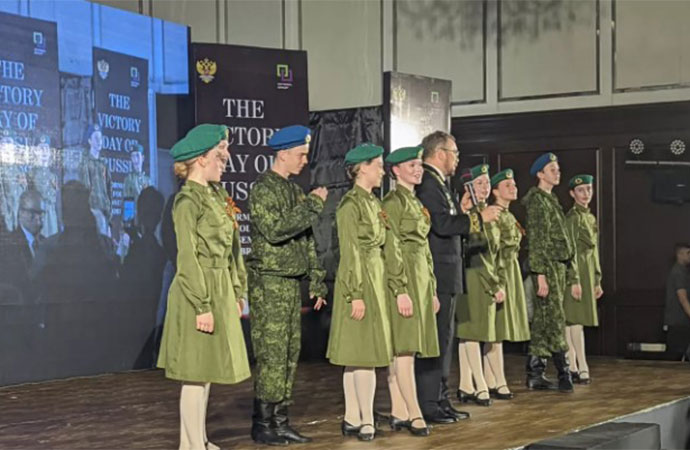
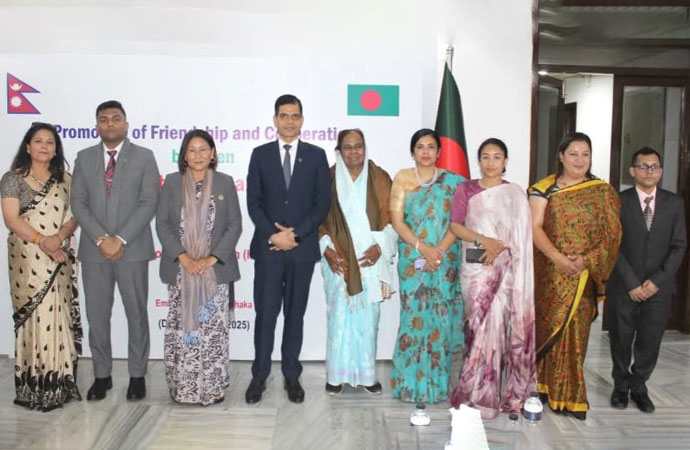



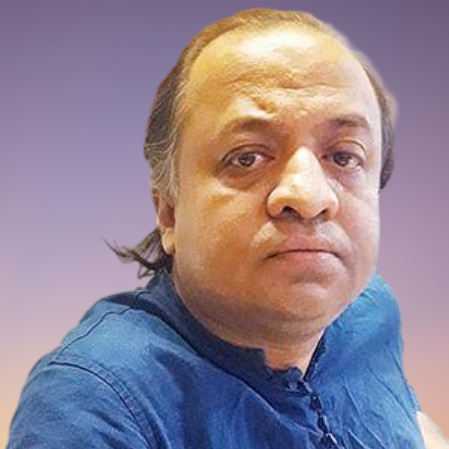







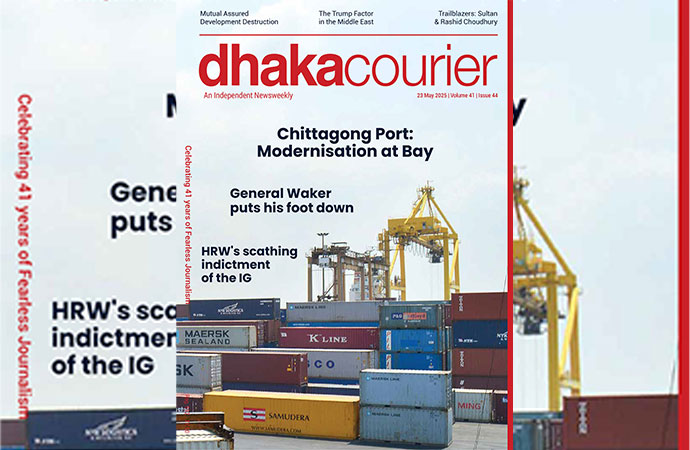
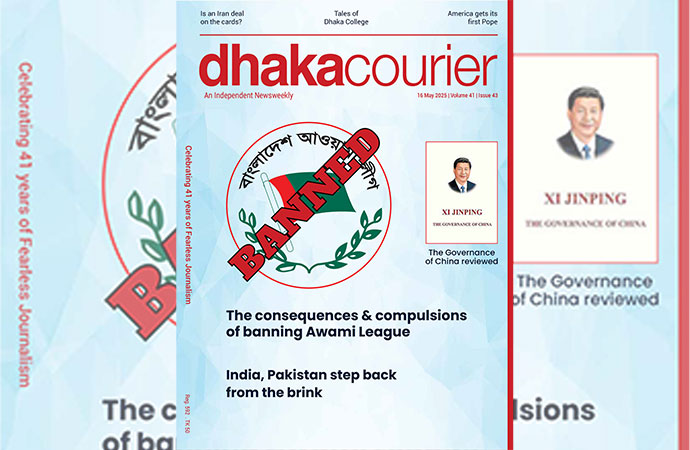
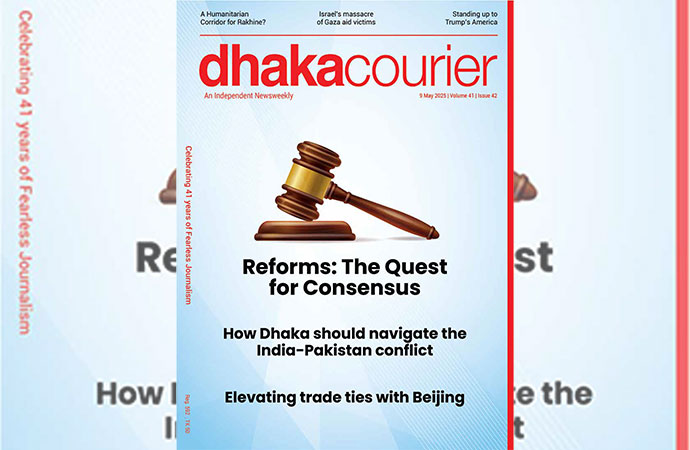
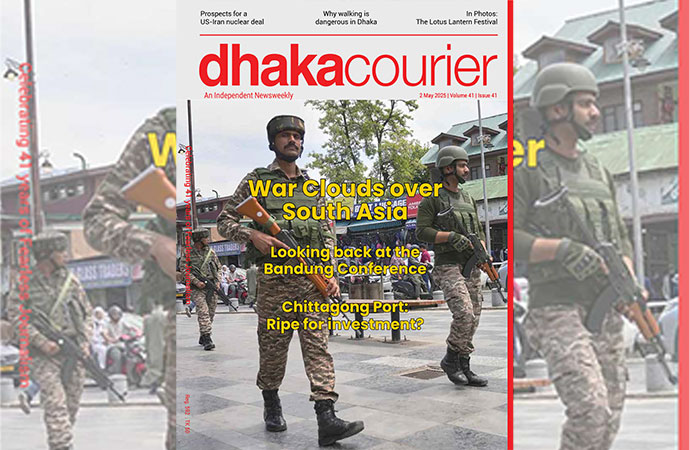
Leave a Comment
Recent Posts
Enayetullah Khan to represent ...
Enayetullah Khan, Editor-in-Chief of United News of Bangladesh (UNB), ...
The tragedy in Ahmedabad touch ...
Air crashes are inherently international incidents, and the emotions t ...
Asset recovery a key focus; breakthroughs from talks ..
'It'll inspire youths to build Bangladesh they dream ..
UK envoy Sarah Cooke happy with Yunus’ visit to Brit ..
Prof Yunus honoured with prestigious Harmony Award b ..